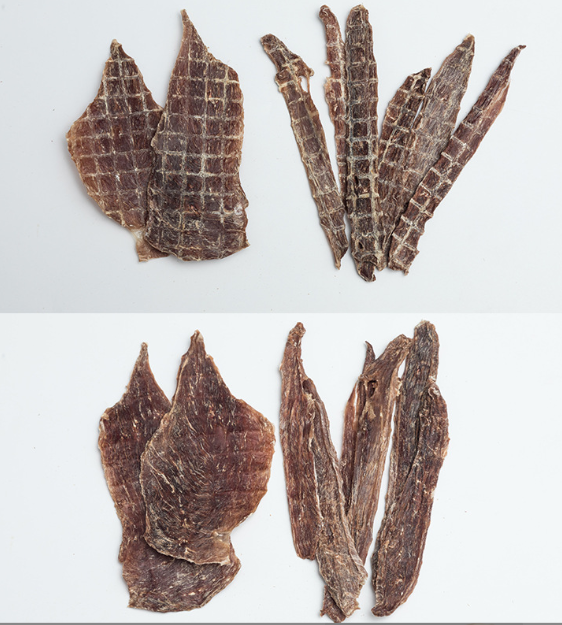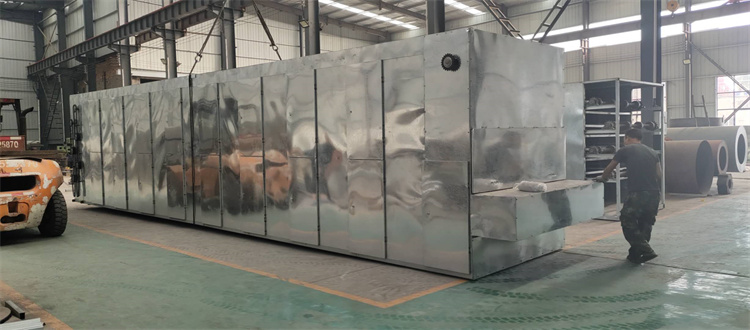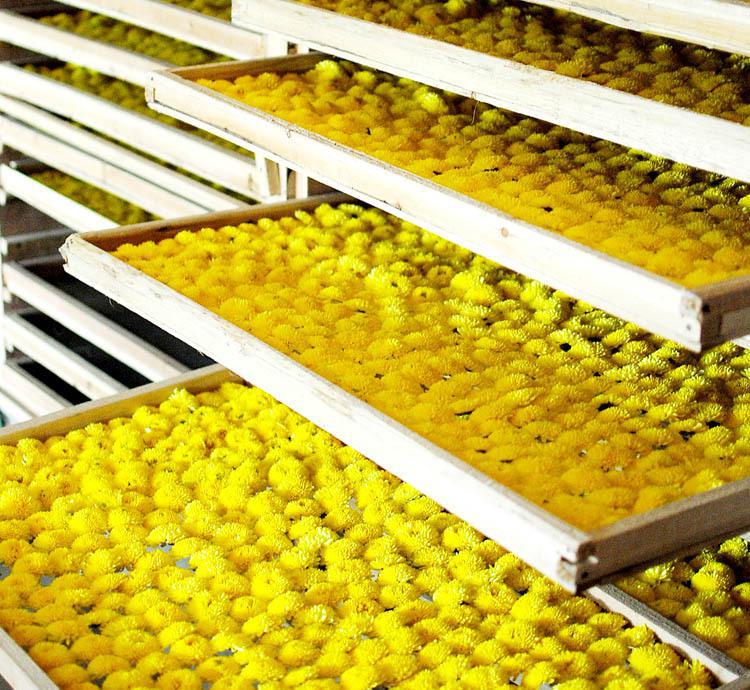Table of Contents
Optimizing Efficiency: Key Features of High Grade Vegetable Drying Ovens
In the realm of food processing and preservation, the importance of efficient and effective drying techniques cannot be overstated. High grade vegetable drying ovens stand at the forefront of this endeavor, offering a range of features designed to optimize efficiency and quality. These ovens play a crucial role in preserving the nutritional value, flavor, and appearance of vegetables, ensuring that they remain viable for consumption over extended periods. One of the key features of high grade vegetable drying ovens is their advanced temperature control systems. These ovens are equipped with precise temperature regulation mechanisms that allow operators to maintain optimal drying conditions throughout the process. By carefully controlling temperature levels, these ovens ensure uniform drying without compromising the quality of the vegetables. This not only enhances efficiency but also results in a superior end product with minimal loss of nutrients and flavor.
Moreover, high grade vegetable drying ovens are designed for versatility and adaptability. They can accommodate a wide range of vegetables, from leafy greens to root crops, allowing for efficient processing of diverse produce. This flexibility is essential for food manufacturers and processors who deal with varying types and quantities of vegetables on a regular basis. By offering a versatile solution, these ovens enable businesses to streamline their operations and maximize productivity.
Another important feature of high grade vegetable drying ovens is their energy efficiency. These ovens are engineered to minimize energy consumption while maximizing drying performance. Advanced insulation materials and heat recovery systems help to retain heat within the oven chamber, reducing the need for additional energy input. This not only lowers operating costs but also contributes to environmental sustainability by reducing carbon emissions and energy waste.
In addition to temperature control and energy efficiency, high grade vegetable drying ovens are equipped with advanced monitoring and control capabilities. These ovens are outfitted with sensors and automation systems that constantly monitor key parameters such as temperature, humidity, and airflow. Operators can easily adjust settings and parameters as needed to optimize drying conditions and ensure consistent results. This level of automation not only improves efficiency but also minimizes the risk of human error, leading to higher quality end products.
Furthermore, high grade vegetable drying ovens are designed for ease of maintenance and cleaning. They feature durable construction materials and removable components that facilitate quick and thorough cleaning between batches. This helps to prevent cross-contamination and maintain hygiene standards in food processing facilities. Additionally, modular design elements make it easy to access internal components for routine maintenance and repairs, reducing downtime and ensuring continuous operation.
One of the key features of high grade vegetable drying ovens is their advanced temperature control systems. These ovens are equipped with precise temperature regulation mechanisms that allow operators to maintain optimal drying conditions throughout the process. By carefully controlling temperature levels, these ovens ensure uniform drying without compromising the quality of the vegetables. This not only enhances efficiency but also results in a superior end product with minimal loss of nutrients and flavor.
Moreover, high grade vegetable drying ovens are designed for versatility and adaptability. They can accommodate a wide range of vegetables, from leafy greens to root crops, allowing for efficient processing of diverse produce. This flexibility is essential for food manufacturers and processors who deal with varying types and quantities of vegetables on a regular basis. By offering a versatile solution, these ovens enable businesses to streamline their operations and maximize productivity.
Another important feature of high grade vegetable drying ovens is their energy efficiency. These ovens are engineered to minimize energy consumption while maximizing drying performance. Advanced insulation materials and heat recovery systems help to retain heat within the oven chamber, reducing the need for additional energy input. This not only lowers operating costs but also contributes to environmental sustainability by reducing carbon emissions and energy waste.
In addition to temperature control and energy efficiency, high grade vegetable drying ovens are equipped with advanced monitoring and control capabilities. These ovens are outfitted with sensors and automation systems that constantly monitor key parameters such as temperature, humidity, and airflow. Operators can easily adjust settings and parameters as needed to optimize drying conditions and ensure consistent results. This level of automation not only improves efficiency but also minimizes the risk of human error, leading to higher quality end products.
Furthermore, high grade vegetable drying ovens are designed for ease of maintenance and cleaning. They feature durable construction materials and removable components that facilitate quick and thorough cleaning between batches. This helps to prevent cross-contamination and maintain hygiene standards in food processing facilities. Additionally, modular design elements make it easy to access internal components for routine maintenance and repairs, reducing downtime and ensuring continuous operation.
 In conclusion, high grade vegetable drying ovens offer a range of key features that are essential for optimizing efficiency in food processing operations. From precise temperature control to energy efficiency and advanced monitoring capabilities, these ovens are designed to deliver consistent results while minimizing operational costs and environmental impact. By investing in high grade vegetable drying ovens, food manufacturers and processors can enhance their production capabilities and meet the growing demand for high-quality, shelf-stable vegetable products.
In conclusion, high grade vegetable drying ovens offer a range of key features that are essential for optimizing efficiency in food processing operations. From precise temperature control to energy efficiency and advanced monitoring capabilities, these ovens are designed to deliver consistent results while minimizing operational costs and environmental impact. By investing in high grade vegetable drying ovens, food manufacturers and processors can enhance their production capabilities and meet the growing demand for high-quality, shelf-stable vegetable products.Sustainable Solutions: Energy-Efficient Practices in Vegetable Drying Ovens
High-grade vegetable drying ovens represent a crucial component in the food processing industry, facilitating the preservation of perishable goods while maintaining their nutritional value. In recent years, the emphasis on sustainability has prompted a shift towards energy-efficient practices in various industrial processes, including vegetable drying. In this article, we delve into the significance of energy-efficient vegetable drying ovens, exploring their benefits, key features, and the role they play in sustainable food production. Energy efficiency stands as a cornerstone in modern industrial operations, with a growing awareness of the environmental impact associated with energy consumption. Vegetable drying ovens, traditionally known for their high energy demands, have undergone significant advancements to reduce their environmental footprint while enhancing performance. These high-grade ovens utilize innovative technologies and design principles to optimize energy utilization throughout the drying process.
Energy efficiency stands as a cornerstone in modern industrial operations, with a growing awareness of the environmental impact associated with energy consumption. Vegetable drying ovens, traditionally known for their high energy demands, have undergone significant advancements to reduce their environmental footprint while enhancing performance. These high-grade ovens utilize innovative technologies and design principles to optimize energy utilization throughout the drying process.
 In addition to energy efficiency, sustainable practices in vegetable drying ovens extend to the utilization of renewable energy sources and waste heat recovery systems. Solar-powered drying ovens harness the abundant energy from the sun to drive the drying process, offering a clean and renewable alternative to conventional fossil fuels. Waste heat recovery systems capture and utilize excess heat generated during the drying process to preheat incoming air or water, further reducing energy consumption and enhancing overall efficiency.
The adoption of energy-efficient vegetable drying ovens aligns with broader sustainability initiatives aimed at reducing greenhouse gas emissions and mitigating climate change. By minimizing energy consumption and utilizing renewable resources, these ovens contribute to a more environmentally friendly and socially responsible approach to food production. Moreover, the implementation of sustainable practices enhances the resilience and competitiveness of food processing operations in an increasingly resource-constrained world.
In conclusion, high-grade vegetable drying ovens play a pivotal role in promoting sustainable practices within the food processing industry. Through advancements in energy efficiency, design optimization, and the utilization of renewable resources, these ovens offer a viable solution for preserving perishable goods while minimizing environmental impact. As the demand for sustainable food production continues to grow, the adoption of energy-efficient vegetable drying ovens represents a significant step towards achieving a more resilient and environmentally conscious future.
In addition to energy efficiency, sustainable practices in vegetable drying ovens extend to the utilization of renewable energy sources and waste heat recovery systems. Solar-powered drying ovens harness the abundant energy from the sun to drive the drying process, offering a clean and renewable alternative to conventional fossil fuels. Waste heat recovery systems capture and utilize excess heat generated during the drying process to preheat incoming air or water, further reducing energy consumption and enhancing overall efficiency.
The adoption of energy-efficient vegetable drying ovens aligns with broader sustainability initiatives aimed at reducing greenhouse gas emissions and mitigating climate change. By minimizing energy consumption and utilizing renewable resources, these ovens contribute to a more environmentally friendly and socially responsible approach to food production. Moreover, the implementation of sustainable practices enhances the resilience and competitiveness of food processing operations in an increasingly resource-constrained world.
In conclusion, high-grade vegetable drying ovens play a pivotal role in promoting sustainable practices within the food processing industry. Through advancements in energy efficiency, design optimization, and the utilization of renewable resources, these ovens offer a viable solution for preserving perishable goods while minimizing environmental impact. As the demand for sustainable food production continues to grow, the adoption of energy-efficient vegetable drying ovens represents a significant step towards achieving a more resilient and environmentally conscious future.
